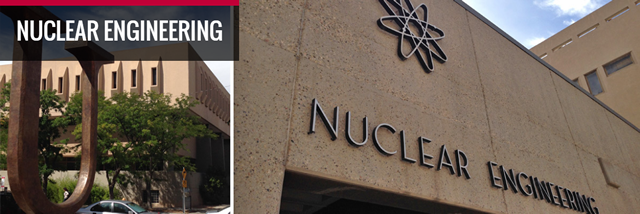
Nuclear Engineering ETDs
Publication Date
Fall 11-15-2018
Abstract
During a preventative maintenance at the Los Alamos Neutron Science Center (LANSCE) Isotope Production Facility (IPF), a beam window made of solution annealed Alloy 718 was replaced and the old beam window was analyzed. The old beam window underwent mechanical testing and microstructure analysis. During the microstructure analysis, the formation of γꞌꞌ precipitates was observed in Transmission Electron Microscopy (TEM) electron diffraction pattern. The formation of γꞌꞌ precipitates was not expected since they are not stable under irradiation. Furthermore, the formation of γꞌꞌ precipitates was observed only at a temperature of 33ºC, and a dose of 0.7 displacement per atom (dpa) with energetic H+ ions. The precipitate formation was not observed in the rest of the analyzed section of the beam window. The present work attempts to explain the formation of the precipitates with a series of carefully designed in-situ irradiation experiments at different doses, dose rates and temperatures.
Testing at Sandia National Laboratory’s (SNL) Ion in situ TEM lab (I3TEM) was used to investigate the temperature and dose rate that γꞌꞌ precipitates will form under irradiation. The first test was conducted with 1.2 MeV Ni ions at room temperature up to a dose of 1.4 dpa. The test results concluded that γꞌꞌ precipitates do not form under high dose rates (compared to protons in the actual beam window). The second test was conducted using 2.8 MeV Au ions at 200 ºC and came up with the same null findings. The test concluded elevated temperatures and irradiation conditions do not foster an environment for precipitation growth. A third and final test to investigate phase stability in solution annealed Alloy 718 was conducted using 800 KeV H+ ion irradiations and concluded that the γꞌꞌ precipitates do not form under slower irradiation doses either.
The stress state of the material under influence of the ion beam under normal operations was simulated with finite element analysis using Solidworks. The simulation showed that the maximum stress was located in the same outer region where the γꞌꞌ precipitates were discovered. Furthermore, the stress levels were found to be similar to literature work. Therefore, the formation of γꞌꞌ precipitates in the solution annealed beam window of LANCE Isotope Production Facility could be attributed to stress. Further studies could find a balance between irradiation induced disordering and stress induced formation.
Keywords
Ion Irradiation, Dose, TEM, stress induced precipitates
Document Type
Thesis
Language
English
Degree Name
Nuclear Engineering
Level of Degree
Masters
Department Name
Nuclear Engineering
First Committee Member (Chair)
Osman Anderoglu
Second Committee Member
Stuart Maloy
Third Committee Member
Youho Lee
Recommended Citation
Pike, James R.. "INVESTIGATION OF THE FORMATION OF γꞌꞌ PRECIPITATES UNDER ION IRRADIATION AND ELEVATED TEMPERATURE ENVIRONMENTS." (2018). https://digitalrepository.unm.edu/ne_etds/78


